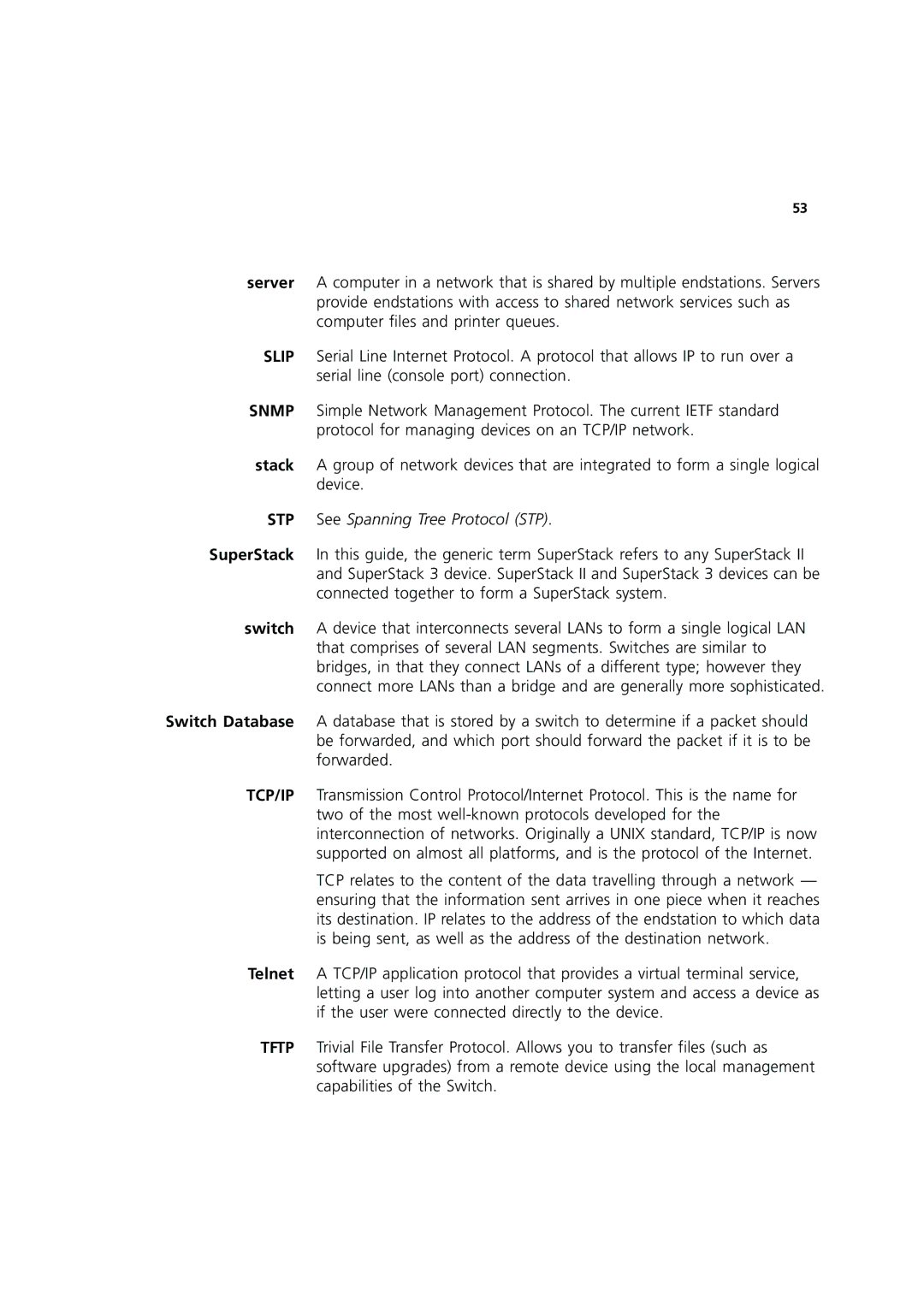53
server | A computer in a network that is shared by multiple endstations. Servers |
| provide endstations with access to shared network services such as |
| computer files and printer queues. |
SLIP | Serial Line Internet Protocol. A protocol that allows IP to run over a |
| serial line (console port) connection. |
SNMP | Simple Network Management Protocol. The current IETF standard |
| protocol for managing devices on an TCP/IP network. |
stack | A group of network devices that are integrated to form a single logical |
| device. |
STP | See Spanning Tree Protocol (STP). |
SuperStack | In this guide, the generic term SuperStack refers to any SuperStack II |
| and SuperStack 3 device. SuperStack II and SuperStack 3 devices can be |
| connected together to form a SuperStack system. |
switch | A device that interconnects several LANs to form a single logical LAN |
| that comprises of several LAN segments. Switches are similar to |
| bridges, in that they connect LANs of a different type; however they |
| connect more LANs than a bridge and are generally more sophisticated. |
Switch Database | A database that is stored by a switch to determine if a packet should |
| be forwarded, and which port should forward the packet if it is to be |
| forwarded. |
TCP/IP | Transmission Control Protocol/Internet Protocol. This is the name for |
| two of the most |
| interconnection of networks. Originally a UNIX standard, TCP/IP is now |
| supported on almost all platforms, and is the protocol of the Internet. |
| TCP relates to the content of the data travelling through a network — |
| ensuring that the information sent arrives in one piece when it reaches |
| its destination. IP relates to the address of the endstation to which data |
| is being sent, as well as the address of the destination network. |
Telnet | A TCP/IP application protocol that provides a virtual terminal service, |
| letting a user log into another computer system and access a device as |
| if the user were connected directly to the device. |
TFTP | Trivial File Transfer Protocol. Allows you to transfer files (such as |
| software upgrades) from a remote device using the local management |
| capabilities of the Switch. |
